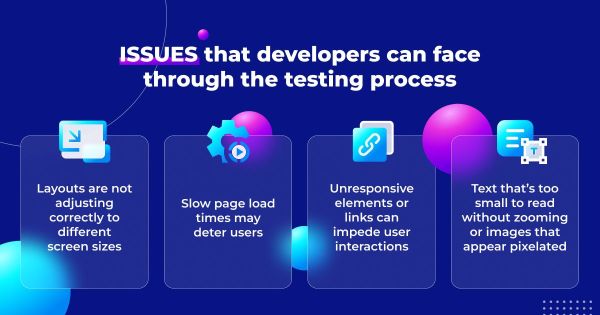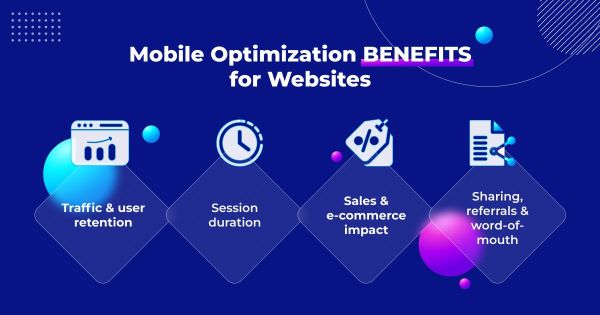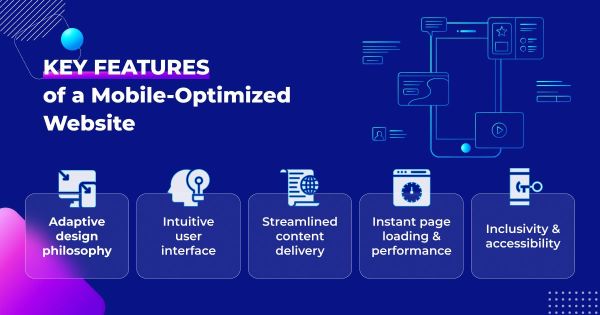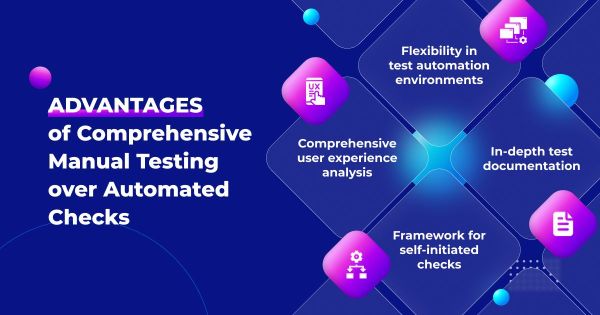More people than ever before are using their phones to go online. Recent research shows that in 2022, the number of unique mobile internet users reached 5 billion, indicating that over 60 percent of the global internet population uses a mobile device to access the web.
Such statistics emphasize the pressing “must” for websites to be mobile-optimized.
Picture this: it is 2013, and Kate, an avid online shopper, discovers a trendy new website selling artisanal jewelry. Eager to explore, she pulls out her smartphone, only to find the site nearly impossible to navigate. Images will not load, buttons are unresponsive, and text requires endless zooming.
Fast forward to today, and such websites feel like relics of a bygone era. The transition to mobile-friendly design is not just a trend — it is a revolution that is redefining the digital landscape. The narrative of mobile optimization is not just about responsive designs or faster load times. It is about ensuring seamless digital stories and experiences for users like Kate, who now form a large part of the internet's vast audience.
Consequently, this article delves into the core concepts of mobile-friendly test and its pivotal role in enhancing user experience, traffic, and sales.
Understanding Mobile-Friendly Sites and The Importance Of Their Testing
A mobile-friendly site is a website designed specifically to be viewed and interacted with on smaller screens, such as those of smartphones and tablets. Unlike traditional websites, which might appear blurred or distorted on mobile screens, mobile-friendly sites adapt to the device they are viewed on. This ensures that content is presented clearly, buttons are easily clickable, navigation is streamlined, and multimedia elements, like videos or animations, play seamlessly.
However, just designing a site with mobile users in mind doesn't guarantee perfection. That is where the mobile-friendly test comes in. This test is a systematic evaluation of how efficiently a website operates on mobile platforms. By running a website through this testing process, developers can identify specific issues, such as:
- Layouts that are not adjusting correctly to different screen sizes;
- Slow page load times that may deter users;
- Unresponsive elements or links, which can impede user interactions;
- Text that is too small to read without zooming or images that appear pixelated.

By adopting mobile-friendly testing, businesses can ensure their websites provide a consistent, user-friendly experience across all devices. As mobile devices increasingly become the primary tools for internet browsing, the significance of having a flawless site in such environments can't be overstated.
The Mobile Frontier: More Than Just Pixels and Clicks
All businesses in the present era should be up-to-date and digital-oriented. Therefore, this article's main statement is: "Mobile isn’t the future; it’s the roaring present. Make sure to adjust to it!”
While having a website was the gold standard in the past, today's gold standard is a website that excels on every mobile device. To understand the importance of mobile optimization, here is a list that will guide you through its dynamic landscape:
- Traffic & user retention. High bounce rates are a symptom of sites not optimized for mobile versions. Users are more likely to leave quickly if a site is difficult to navigate or if it doesn't adjust to their screen size. Furthermore, today's users have limited patience. If your site is slow to load, it might not stick around, negatively impacting both traffic and user retention metrics.
- Session duration. How long a visitor interacts with your site can be indicative of its mobile optimization. Mobile-friendly sites naturally engage users, prompting more extended visits, more content consumption, and deeper engagement with the services or products offered.
- Sales & e-commerce impact. With the rise of digital wallets and streamlined mobile payment methods, mobile shopping has become commonplace, often even preferred. A site not optimized for mobile usage risks losing significant potential sales. Mobile users expect a smooth checkout process, and if your site fails to deliver, they may go to a competitor.
- Sharing, referrals & word-of-mouth. Sites that offer outstanding mobile experiences are more likely to be recommended. Whether through direct links in messaging apps or mentions on platforms like Instagram or Twitter, a mobile-optimized site has a better chance of gaining organic promotion from satisfied users. In essence, being mobile-friendly can amplify digital word-of-mouth, expanding your reach without additional marketing costs.

When examined closely, mobile optimization is about more than making a site visually appealing on the phone — it's about enhancing user experience, boosting sales, and harnessing the power of community and sharing in the digital age.
Determining Mobile Friendliness
A mobile-friendly site is more than just a shrunk version of its desktop counterpart. It's a unique entity with distinct challenges and advantages. While it's vital to tailor content for smaller screens, there's more to mobile optimization. So, what truly defines an excellent mobile experience?
- Adaptive design philosophy. At its core, a mobile-friendly site is one that adjusts its layout, images, and functionalities based on the device accessing it. Whether it's a smartphone, tablet, or even a smartwatch, the website should present itself in the most user-friendly manner possible. This involves more than just resizing — it's about restructuring content for the best mobile experience.
- Intuitive user interface. Mobile users operate with different behaviors and expectations. Taps replace clicks, swipes replace scrolls, and gestures become a critical part of navigation. A mobile-optimized site should intuitively understand and cater to these actions, ensuring that users don’t have to second-guess their actions.
- Streamlined content delivery. Due to limited screen real estate and potential data constraints, it's essential to prioritize content that's most relevant to mobile users. This might mean simplifying menus, highlighting key calls to action, or even offering a different set of features than what's available on the desktop version.
- Instant page loading & performance. Mobile users expect immediate responses to their interactions, whether it is a button press or a form submission, subtle animations, or visual cues. The quicker your site loads, the better chances you have of retaining users and reducing bounce rates — every second, even milliseconds, counts.
- Inclusivity & accessibility. Given the personal nature of mobile devices, websites should cater to a broad spectrum of users, including those with disabilities. Features like voice commands, screen reader compatibility, and adaptable font sizes can make the mobile web more accessible to everyone.

By embracing the above features, you ensure that your digital presence is not only mobile-compatible but also mobile-excellent, offering users a superior experience that keeps them coming back for more. It's an evolving discipline that, when done right, can lead to significantly enhanced user engagement, retention, and loyalty.
Why Online Testing Tools Are Not Enough
To ensure all the above criteria work smoothly in collaboration, you should also pay attention to testing services for prior insights. The digital landscape offers various tools that allow you to gauge your website's mobile performance. Google's Mobile-Friendly Test and Bing's Mobile Friendliness tool, for instance, are excellent starting points. They analyze your site's mobile responsiveness and provide actionable insights. But what about the intricate details, the unique nooks and crannies that can only be observed up close? For in-depth understanding and optimization, more thorough evaluations, manual and real device testing, and tailored solutions are often required.
Here's why thorough manual testing outperforms. First of all, it includes comprehensive user experience analysis. Online tools are programmed to spot generic issues, and while they are efficient in that scope, they can often miss nuanced problems that can mar the user experience. Testing on real devices, on the other hand, replicates the real-world interaction of users on various devices, uncovering potential challenges they might face, which could never be detected by a virtual tool.
Secondly, in-depth test documentation. While automated solutions might flag an issue, they don't always provide the depth of insight required to understand and rectify it. Independent manual testing, however, offers thorough documentation. This deep-dive approach helps developers pinpoint the root of the problem, offering clearer paths to solutions.
Thirdly, it includes flexibility in test automation environments. Professional testers don't just identify problems, they prepare for future assessments too. After manual evaluations, they curate an environment ideal for automated tests, ensuring that subsequent checks can be executed seamlessly, blending the best of both worlds.
Finally, it is important to follow a framework for self-initiated checks. Independent testing is not a one-off event. It sets the stage for continual assessment. Establishing a structured testing process facilitates an environment where auto-tests can be self-launched, guaranteeing that the site remains updated and in sync with the ever-changing mobile ecosystem.
In summary, online checking tools might give you a good starting point. Still, to truly understand the mobile user experience, you need a combination of swift automated checks and in-depth manual evaluations.

Navigating the Mobile Digital Landscape: A Decision for the Future
The mobile era has unequivocally dawned upon us. With over five billion mobile internet users, the emphasis on mobile optimization has never been more paramount. In an age where modern user demands seamless online interactions on their phone, businesses are challenged not only to adapt but excel.
A mobile-friendly site isn't merely a resized version of its desktop counterpart. It's like a well-made puzzle, fitting pieces like easy-to-use design, quick loading pages, and welcoming to everyone.
However, realizing the dream of a mobile-optimized site is more complex than it might seem. While online testing tools offer a telescopic view, the devil, as it is said, is in the details. It is vital to understand the critical importance of comprehensive manual testing and dive deep into the granular details of the testing scope.
So, as you stand at this crossroads, ask yourself: What kind of mobile experience do you wish to offer? Are you content with a superficial litmus test that tells you if your site is "friendly" or "not friendly"? Or do you desire a profound understanding, complete with test documentation, recommendations, and a strategy tailored for the future?
Whether you lean towards automation, manual evaluations, or a blend of both, one thing remains clear: the importance of mobile optimization is not to be understated. As you are considering your next steps, remember we are here to guide, support, and collaborate.
Let's embark on this journey together, navigating the mobile frontier and securing your digital future.
